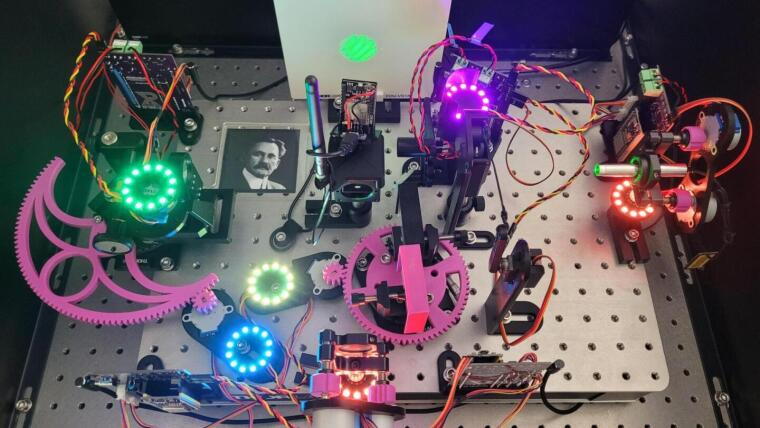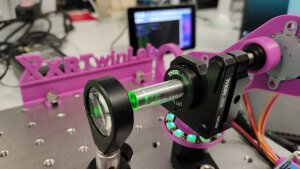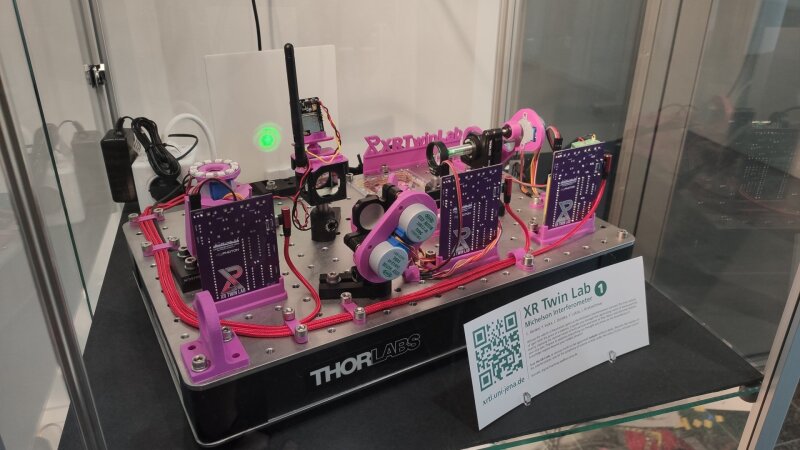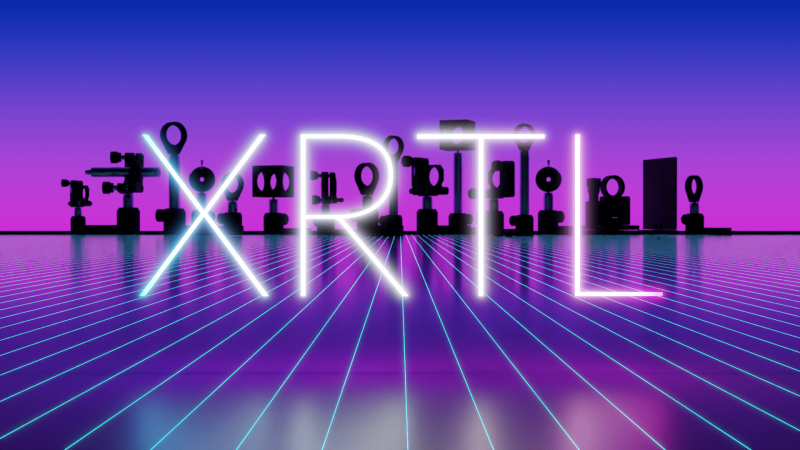
Laser mount with remote controlable actuators.
Image: Fabian LukasRemote labs are a trendsetting way of teaching, communicating, and experiencing science as well as enabling collaborative work. Unfortunately, the implementation of remote access involves a cost-intensive development or at least requires a certain technical skillset. To establish remote labs across disciplines, especially outside the field of IT and engineering, the technical access threshold must be low enough to support a self-contained implementation by researchers, assistants, and technical staff.
Hereby, we have developed the open-source toolbox XR TwinLab (XRTL) for the research field of photonics. XRTL provides a modular way of building a web-based application to control optical experimental setups with the integration of VR and AR endpoints.
Try out the application yourself!
XRTL Showcase at the ACP
Image: Fabian LukasLinks
Find all the information about the development process and how to create your own XRTL:
This demonstration shows the typical use case of the XRTL web app. After logging in, users can arrange the control elements as they wish and observe the effects of their inputs on the experimental setup in real time.



